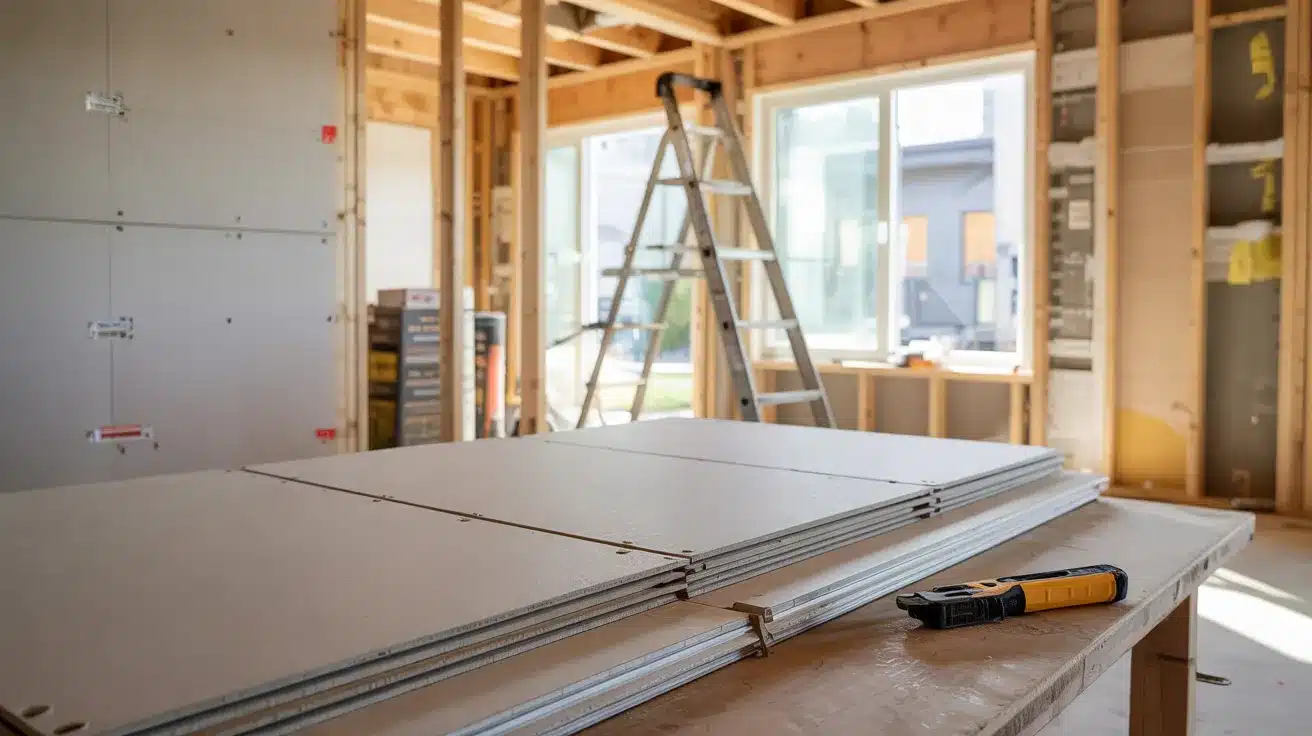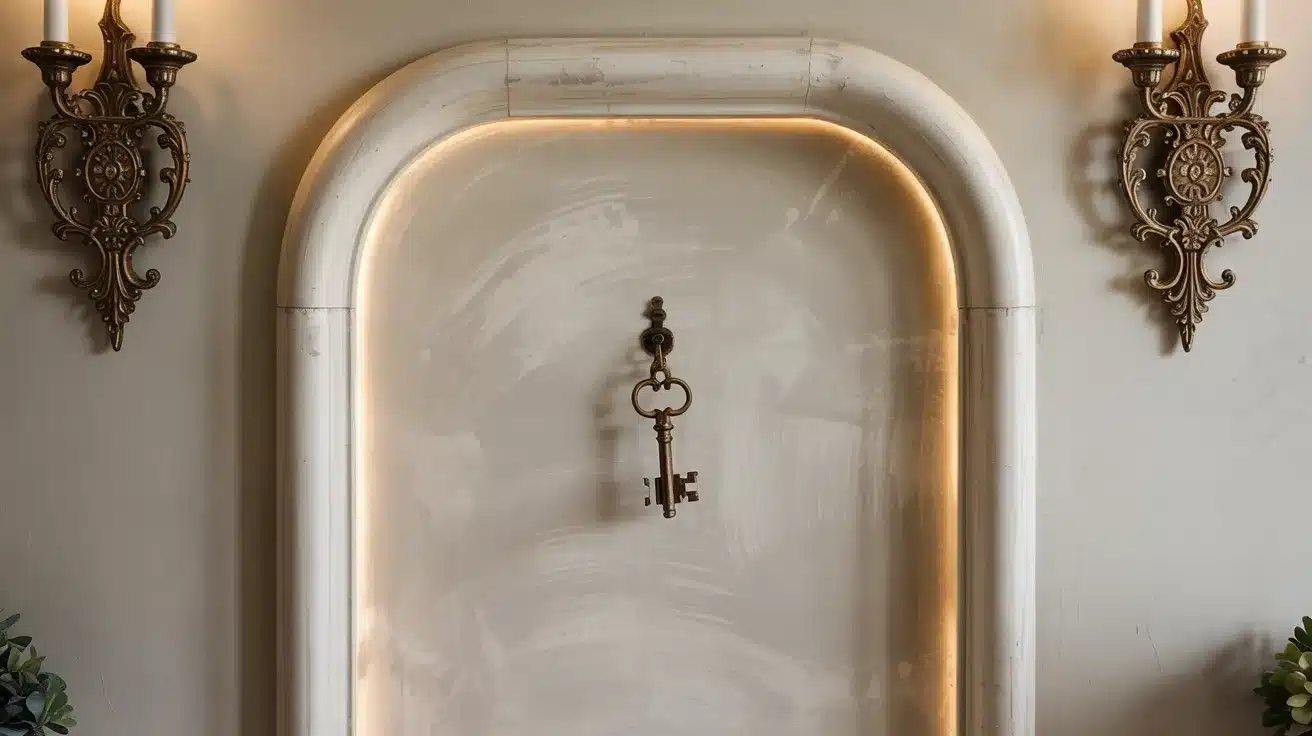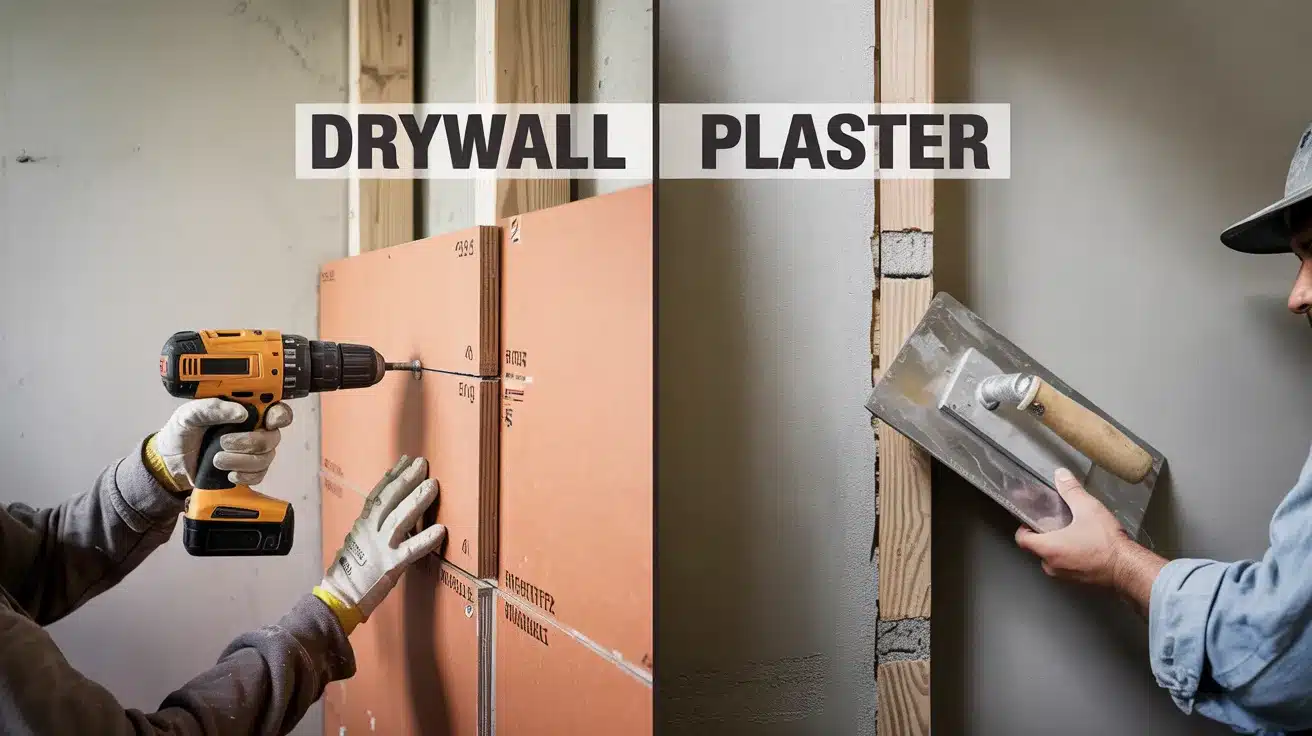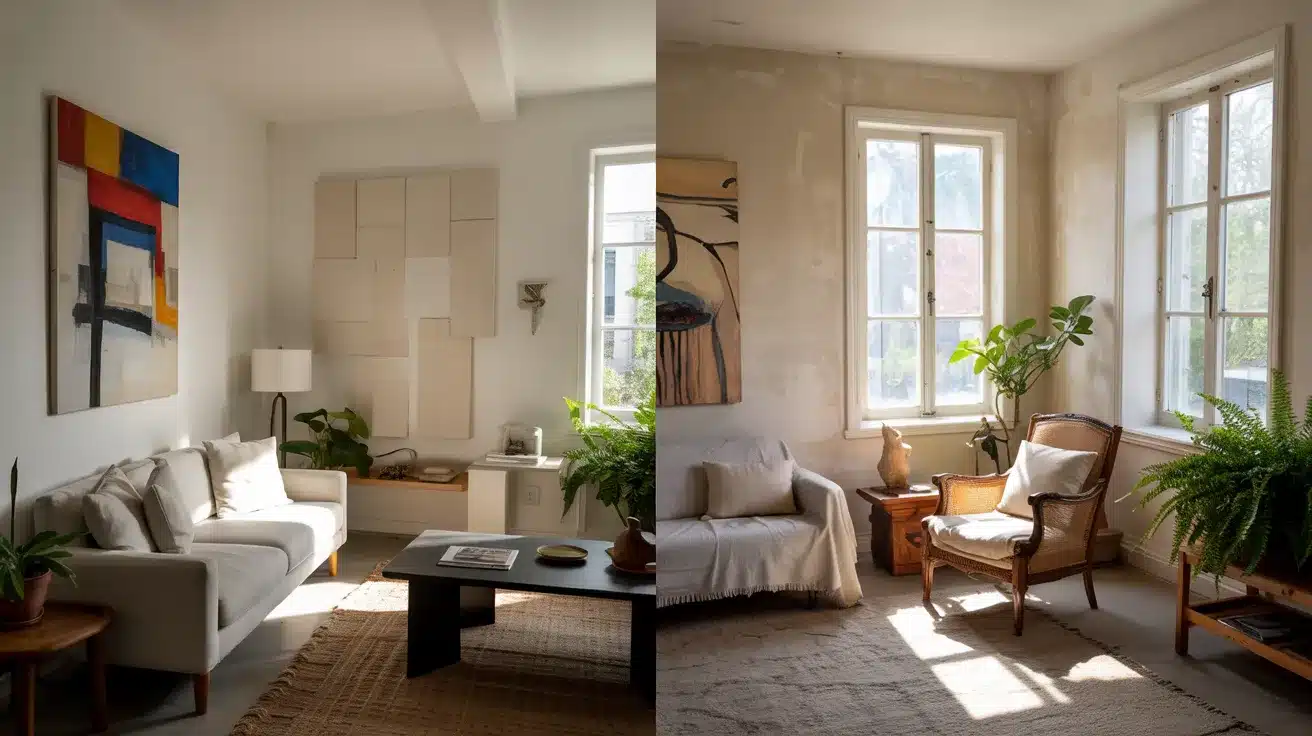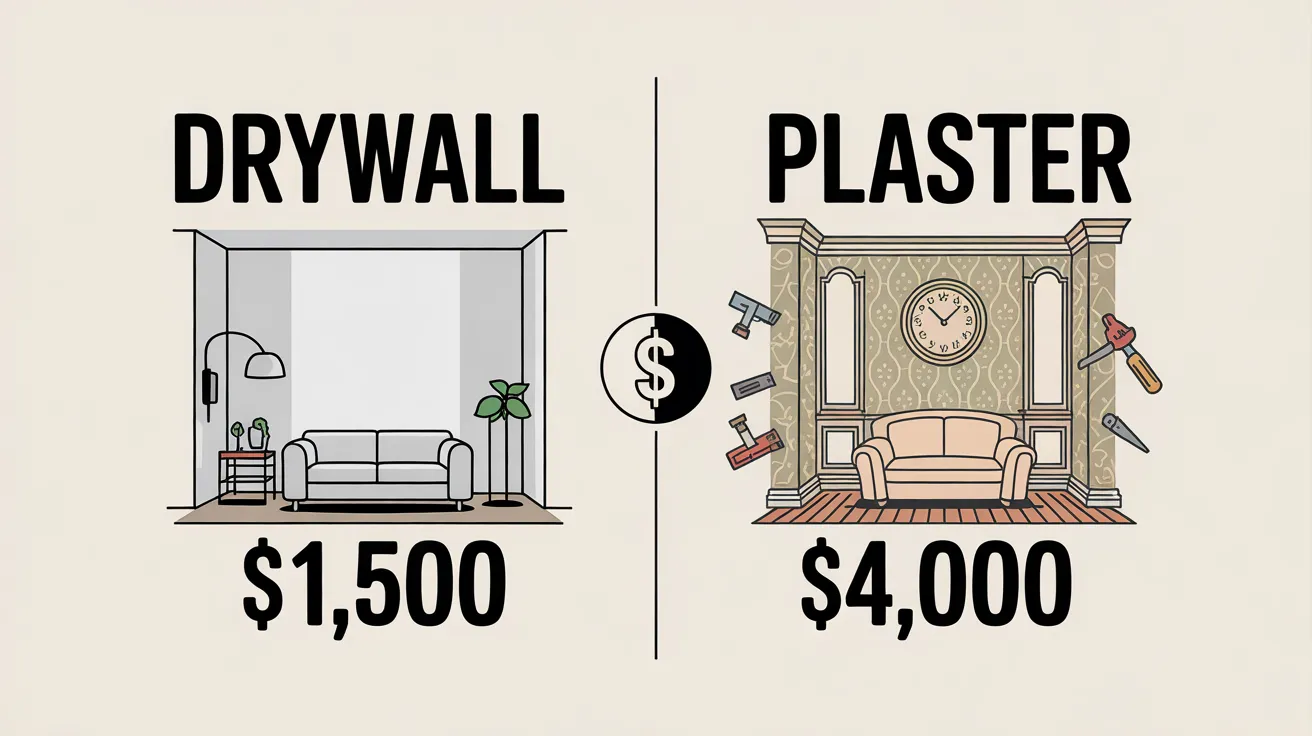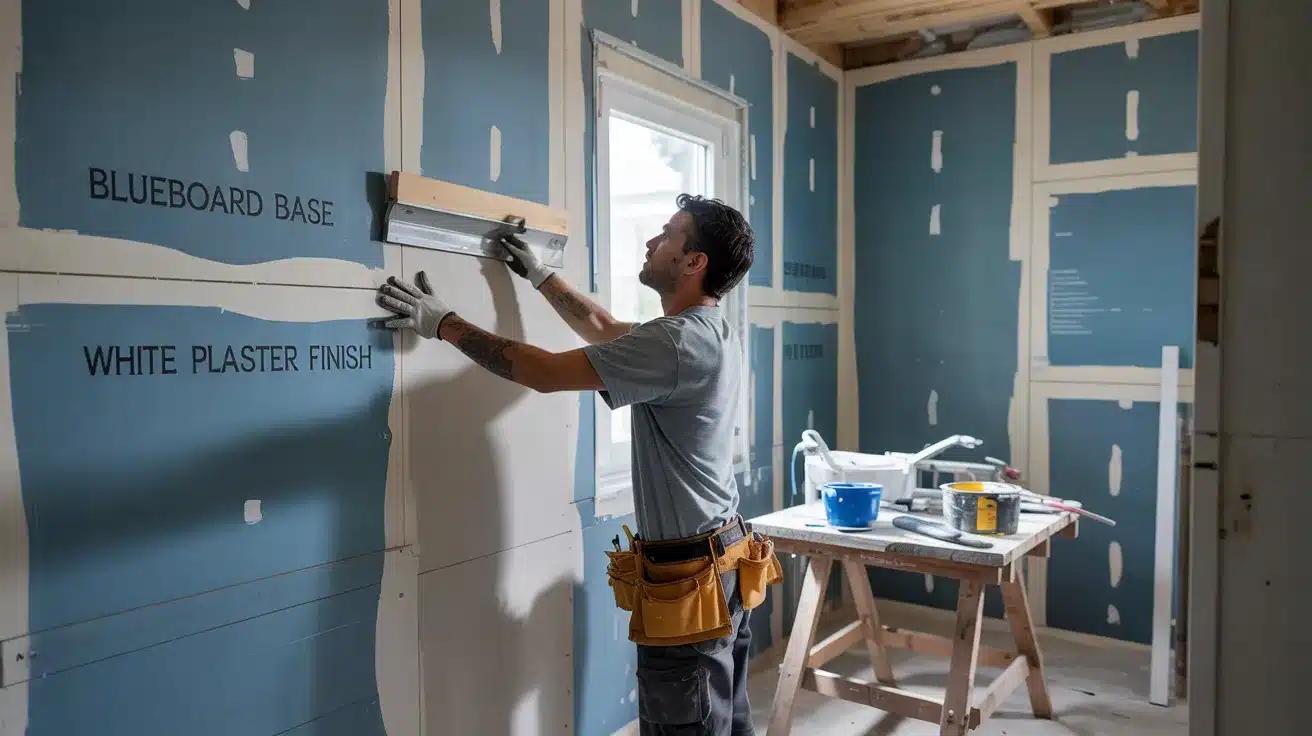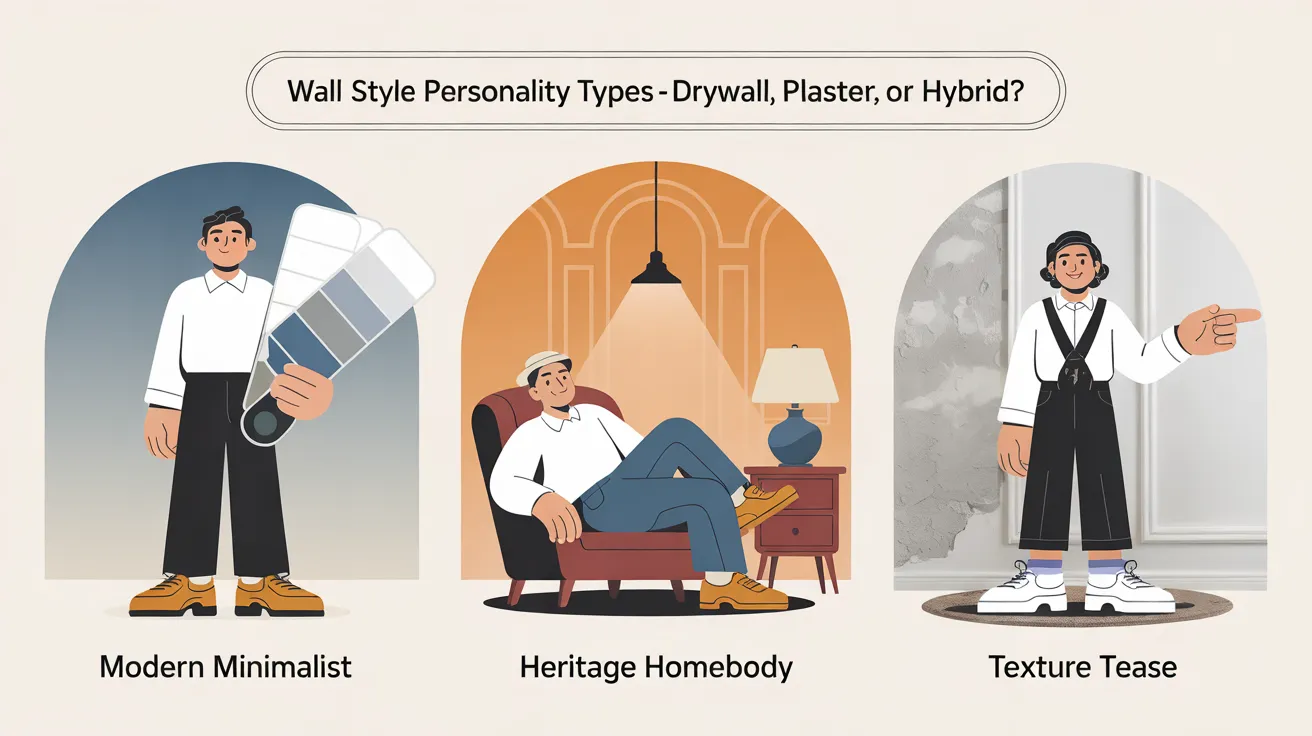As someone who’s spent years in home renovation, I’ve watched the great wall debate unfold in countless homes.
Whether you’re renovating a century-old charmer or building your dream space from scratch, your wall choice matters more than you might think.
I’ve seen homeowners agonize over this decision, weighing timelines against tradition, budgets against beauty.
Today, I’m breaking down the ultimate showdown between drywall and plaster – two materials that determine how your home will look, feel, and sound for decades. Ready to find which wall warrior deserves your loyalty?
Let’s swoop in.
Drywall vs Plaster: The Essential Comparison
Ancient craftsmanship versus modern efficiency: learn which wall material delivers the perfect balance of beauty, strength, and value.
| Feature | Drywall | Plaster |
|---|---|---|
| Installation Time | 2-3 days per room | 1+ week per room |
| Cost | $1.50-$3 per sq ft | $6-10+ per sq ft |
| Thickness | Typically 1/2″ | 7/8″ to 1″ thick |
| Durability | Moderate, easily patched | High, dent-resistant |
| Sound Insulation | Fair (better with additions) | Excellent naturally |
| DIY-Friendly | Yes, beginner-friendly | No, requires skilled artisans |
| Aesthetic Options | Clean, flat surfaces | Textured, curved possibilities |
| Historical Accuracy | Modern (post-1940s) | Traditional (pre-1940s) |
| Repair Difficulty | Easy, accessible materials | Moderate, specialized skills |
| Moisture Resistance | Special versions available | Naturally resistant |
Meet the Competitors
Affordable, efficient, and installer-friendly, drywall delivers modern homes with clean lines and quick results for budget-conscious homeowners.
1. Drywall: The Speedy Sidekick
Born in the 20th century, drywall revolutionized how we build homes with its no-nonsense approach to wall construction.
- Speed champion: Drywall transforms empty studs into finished walls in days, not weeks
- Weekend warrior’s best friend: DIY-friendly and forgiving of amateur mistakes
- Low-maintenance personality: Doesn’t demand specialized skills or exotic tools
When time is money and simplicity matters, drywall shows up like that reliable friend who helps you move with a truck and never complains. It might not be the life of the party, but it gets the job done with minimal drama.
2. Plaster: The Vintage Virtuoso
While drywall is the new kid on the block, plaster has been adorning fine homes since ancient civilizations first discovered how to mix lime and sand.
- Old-world craftsmanship: Creates walls with depth, character, and historical authenticity
- Texture superstar: Offers endless customization possibilities from glass-smooth to richly textured
- Architectural heavyweight: Provides natural curves and details impossible with flat sheets
Plaster doesn’t just cover your walls—it upgrades them. It’s the difference between a mass-produced suit and bespoke tailoring. Both cover you, but one was made specifically for your unique dimensions.
The Face-Off: Wall-to-Wall Comparison
Round 1: Installation Showdown
Drywall’s Approach: “Measure, cut, screw, done.”
The drywall process is refreshingly straightforward:
- Hang large sheets of gypsum board
- Tape the seams
- Apply joint compound
- Sand smooth
- Prime and paint
A typical room can change from studs to painted walls in just 2-3 days. For homeowners anxious to occupy their space or contractors juggling tight schedules, drywall’s efficiency is unbeatable.
Plaster’s Philosophy: “Lath, base coat, finish coat, artistry… patience, young padawan.”
Traditional plastering is more akin to fine art:
- Install wooden or metal lath
- Apply scratch coat and let dry (24+ hours)
- Apply brown coat and let dry (another 24+ hours)
- Create a finish coat with the desired texture
- Allow proper curing before painting
This methodical process can stretch over a week or more. The payoff? Walls that feel substantial and look distinctively handcrafted.
Who wins this round? If your timeline or budget is tight, drywall takes this round by technical knockout. If craftsmanship and tradition matter more than speed, plaster lands the stronger aesthetic punch.
Round 2: Strength & Durability
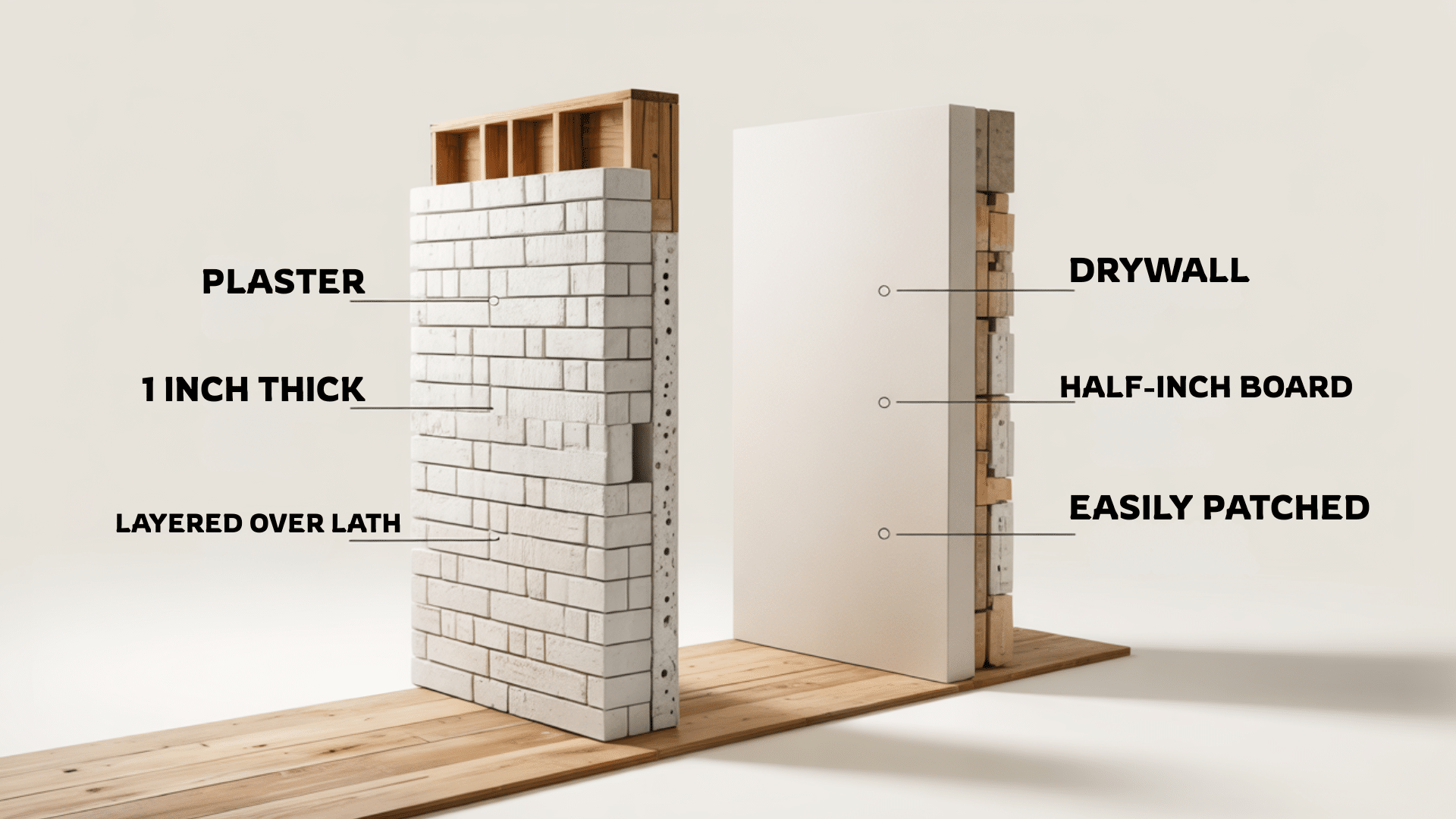
Plaster’s Prowess: “Rock-solid and proud. Handles decades like a boss.”
There’s a reason those century-old homes still have their original plaster:
- Typically 7/8″ to 1″ thick (nearly twice drywall’s thickness)
- Naturally resistant to dents and everyday impacts
- Ages gracefully, often gaining character over time
- Fire-resistant composition adds safety benefits
Walk through a historic home with plaster walls, and you’ll immediately notice how solid they feel—no hollow sounds when you knock, no flex when you lean against them.
Drywall’s Defense: “Gets banged up, but easily patched. Think of it as resilient, not fragile.”
Drywall takes a practical approach to durability:
- Accepts that damage happens and focuses on easy repairs
- Patching holes requires minimal tools and basic skills
- Damaged sections can be replaced without disturbing the entire wall
- Modern versions offer specialized performance (moisture-resistant, fire-resistant, sound-dampening)
Who wins this round? For sheer longevity and strength, plaster claims this round. For practical durability with user-friendly repairs, drywall offers compelling advantages for modern homeowners.
Round 3: Style Points
Plaster’s Aesthetic: “Classy curves, dreamy textures.”
Plaster walls aren’t just functional—they’re fashion statements:
- Creates seamless curved walls and archways
- Offers depth and dimension that flat surfaces can’t match
- Catches light differently throughout the day, creating visual interest
- Supports precise period restorations in historic homes
Drywall’s Design Approach: “Clean, flat, ready for your Pinterest aesthetic.”
Drywall provides the perfect blank canvas:
- Creates precisely flat surfaces ideal for modern design
- Supports any paint finish from matte to high-gloss
- Accepts wallpaper without the texture interference
- Perfect for clean, minimalist spaces
Who wins this round? For architectural interest and inherent beauty, plaster delivers knockout style. For clean versatility and modern design compatibility, drywall holds its own with impressive adaptability.
Round 4: The Wallet Test
Drywall’s Financial Case: “Your wallet sighs in relief.”
Let’s talk real numbers:
- Materials average $1.50-$3 per square foot installed
- Requires less specialized labor (lower hourly rates)
- Faster installation means fewer labor hours
- Repairs rarely break the budget
For a standard 12×12 room, complete drywall installation might cost $1,000-1,800, making it accessible for almost any renovation budget.
Plaster’s Investment Perspective: “It’s an investment,” says your contractor with a wink.
Premium materials command premium prices:
- Expect $6-10+ per square foot for traditional three-coat plaster
- Requires skilled artisans who command higher rates
- Multi-day process accumulates labor costs
- Specialized finishes can increase costs substantially
That same 12×12 room might cost $3,500-5,000+ with traditional plaster—a significant difference that explains why many homeowners pause before committing.
Who wins this round? For budget-conscious projects, drywall wins by a landslide. If you’re prioritizing long-term value and craftsmanship over initial cost, plaster remains the gold standard despite the premium price.
Round 5: Soundproofing Smackdown
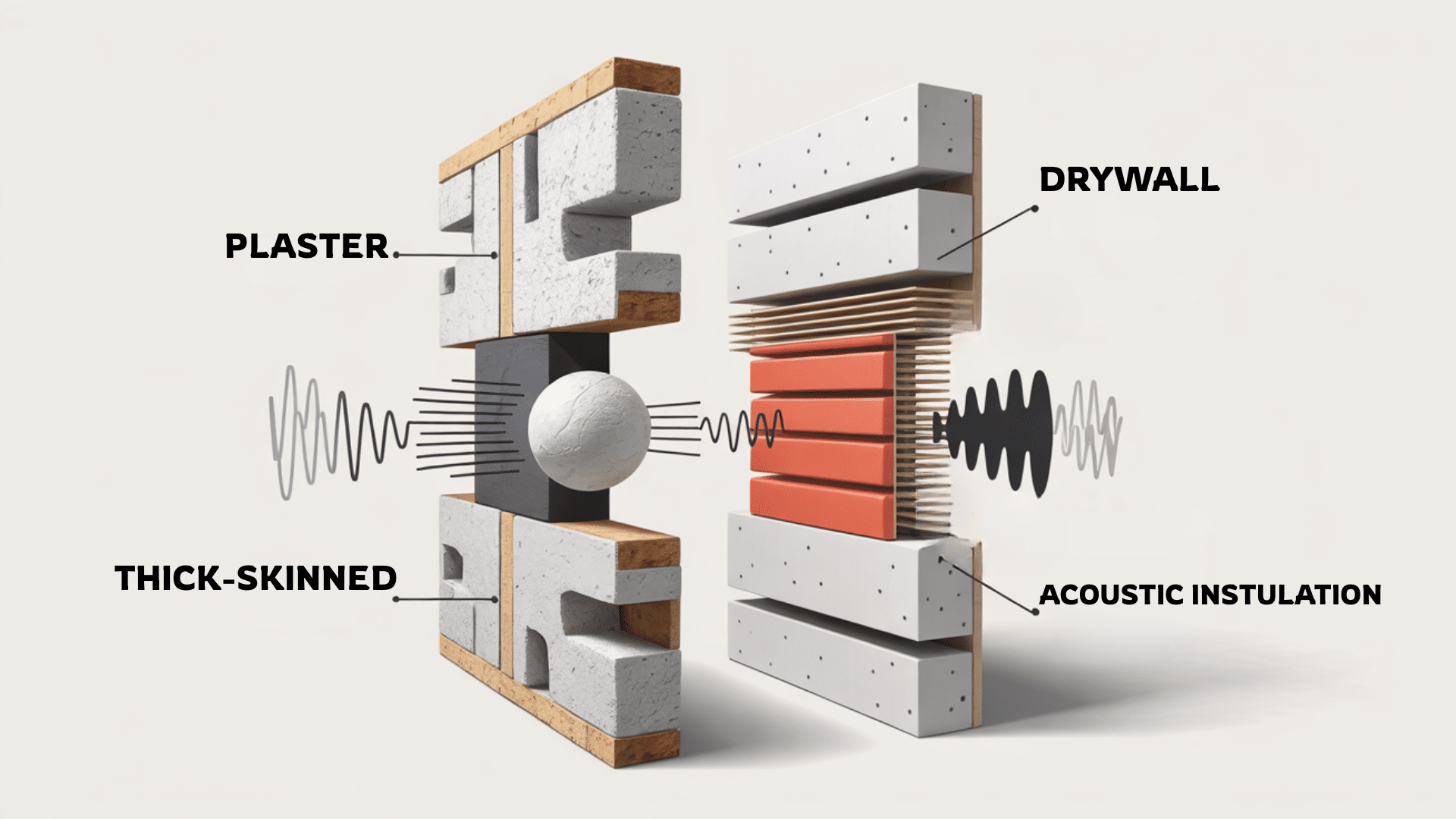
Plaster’s Acoustic Advantage: “Thick-skinned and whisper-quiet.”
The density of plaster creates natural sound barriers:
- Mass blocks sound transmission between rooms
- Fewer seams means fewer pathways for sound travel
- Absorbs vibrations rather than transmitting them
- Creates noticeably quieter interiors without additional materials
For light sleepers, work-from-home professionals, or music enthusiasts, plaster’s natural acoustic properties offer significant quality-of-life benefits.
Drywall’s Sound Solution: “Needs help from insulation buddies.”
Standard drywall isn’t known for sound isolation, but it plays well with others:
- Easily pairs with acoustic insulation
- Works with resilient channels and sound-isolation clips
- Available in soundproof variants with enhanced performance
- Can be installed in multiple layers for improved sound blocking
With the right companions, drywall can create surprisingly quiet spaces, but these additions increase both cost and wall thickness.
Who wins this round? For natural sound dampening without extra steps, plaster takes this round. For customizable acoustic solutions, drywall’s compatibility with modern soundproofing systems creates effective alternatives.
Plot Twist: The Unexpected Hero – Hybrid Walls
What if you didn’t have to choose? Enter the compromise candidate that’s winning over both traditionalists and modernists.
Blueboard and Veneer Plaster: The Best of Both Worlds
This innovative system combines installation efficiency with aesthetic benefits:
- Blueboard installs just like drywall
- A thin veneer plaster layer (1/16″ to 1/8″) creates the finished surface
- Results look and feel more like traditional plaster
- Installation time falls between drywall and full plaster
Hybrid systems give us the character without the full traditional plaster price tag, It’s ideal for those who want texture without full commitment.
When Hybrid Makes Perfect Sense:
- Renovating historic homes on realistic budgets
- Adding character to new construction
- Creating more durable surfaces in high-traffic areas
- Balancing craftsmanship with practical timelines
This middle path satisfies both practical demands and aesthetic aspirations—perfect for the homeowner who appreciates craftsmanship but still has budget constraints.
Who Wins? You Decide.
What’s Your Wall Personality?
Are you a Modern Minimalist? → Drywall
- You value efficiency and clean design
- Your renovation timeline matters
- DIY potential ranks high on your priority list
- You prefer to invest in furniture and decor rather than construction
A Heritage Homebody? → Plaster
- You believe craftsmanship is worth the wait
- Historical authenticity matters to you
- You’re creating a forever home, not a temporary space
- You appreciate walls with character and substance
A Texture Tease? → Hybrid
- You want more personality than standard drywall provides
- Your budget falls between “practical” and “premium”
- You appreciate tradition but welcome modern innovations
- You’re seeking a balance between visual and practicality
6 Tips for Making Your Final Wall Decision
- Consider your home’s age and style – Period-appropriate materials improve value in historic homes.
- Be honest about your budget – Include not just materials but skilled labor costs.
- Evaluate your local resources – Are qualified plasterers available in your area?
- Think about your timeline – Rush jobs and traditional plastering don’t mix well.
- Consider room function – Kitchens and bathrooms might benefit from moisture-resistant options.
- Recognize that mixed approaches are valid – Many beautiful homes use different wall types in different areas.
Final Thoughts
After evaluating these wall warriors round by round, I’ve found there’s no universal champion in the drywall versus plaster debate.
Each material brings unique strengths to your home’s inner framework. Drywall offers accessibility, speed, and budget-friendliness for modern lifestyles.
Plaster delivers unmatched character, soundproofing, and historic realism for those who value craftsmanship. Hybrid options bridge these worlds for the undecided.
Your perfect match ultimately depends on your specific circumstances – your timeline, budget, visual preferences, and long-term plans.
Whether you choose the efficient practicality of drywall, the timeless artistry of plaster, or the balanced approach of hybrid systems, remember that what matters most is selecting materials that align with your unique vision of home.
The walls that surround you should reflect what you truly value.



